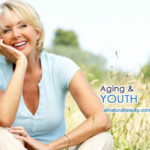
When we think of happy, we use terms that suggest light. We call a happy mood or countenance “bright” and “sunny.” We speak of smart children as “bright”; we refer to creative and highly intelligent thought as “brilliance”; we “see the light” when we have a realization of truth. We sing about love “lighting up” our lives and how we’ve “got no sunshine when you’re gone.” On the contrary, we characterize sadness as dark. Gloom means darkness as in low light as well as darkness of emotion. We dress in black for mourning and we may be in a “black mood.” Darkness seems to lie at the core of despair, illness, dungeons, guilt, festering wounds, jealousy, the yucky stuff. We grope without a “gleam” of hope. And so on…you could give me your many examples of such expressions…they abound in our and other languages.
When I was a small kid, my mother used to kick me outside to play in the sunshine and it was often hard for me to hoist myself up and out of the house. I was a piano-playing addict and had a streak of plain old laziness. But once outside, I forgot the inside world and would not be easily called back in. There were the neighbor’s swings, dirt and hoses for mudpies, bike rides all over Kingdom Come. There was wind, sky and …sunshine!! Later on, I played tennis and spent hours outside each summer day hitting the balls or watching from the bleachers. I spent a very shined-on youth. Come summertime, the pale, slightly paunchier, relatively listless me transformed to its summer version: rosy-cheeked, brown as a berry, svelt (despite eating enough for three or four of me now) and effortlessly energetic and strong. Add cheery to the list.
What I realized is that the common denominator to my merrier and more energetic times is sunshine. This has stuck me all the more since over the last several years I have gotten very, very little of it. A happy person by preference and habit, I have noticed that if I feel low, just by placing my body in the path of sunbeams for a stretch of time, my mood lifts. I have noticed other physical symptoms that I believe are effects of sunshine scarcity, but this article is about mood.
Light Combats Depression
Official statistics often quoted in the media state that millions of Americans and many more worldwide suffer from depression. Depression is a highly promoted “illness.” These statistics are commonly used as support for widespread marketing of anti-depressant drugs to overcome this problem of societal proportions.
This has struck my husband and I as odd and unfortunate. We’ve never been ones to opt to simply chase and suppress symptoms. We’d rather bother to go for causes. Why not look into WHY people are depressed and locate more natural solutions to help these people? Why not take a holistic approach that looks at the whole person and the overall health and well-being?
As it turns out, there are nearly always fairly simple, easily fixable physical problems underlying depression. Poor diet, blood sugar imbalances (such as hypoglycemia), allergies, imbalances such as yeast overgrowth (candida albicans), chemical exposures and other things can trigger depression. Simple changes of diet and lifestyle and a return to a more natural, chemical-free environment can help tremendously. None of these solutions involves taking possibly dangerous, mind-altering drugs.
Recently it has struck us that exposure to light is perhaps one of the most useful tools to reduce or eliminate depression — bright light. In our research on this subject we found some fascinating information I’d like to share with you.
Our Ancestors Were Rarely Depressed
If real depression had been as widespread in times past as it is now, it’s hard to imagine how our civilization could ever have been built. Man certainly has been an energetic, industrious and creative fellow. He’s also been naughty, blood-thirsty, misled and crass, so I don’t mean to suggest a slanted, unrealistic picture… all of history has not been a rose-scented delight! But even when behaving cruelly or stupidly, earlier mankind was obviously not generally immobilized by depression. And beholding the works of art, architecture, engineering and science that Man created long before he invented computers, electric lights or any of the other modern conveniences, we feel awe. Tour a really old city and you’re struck with its aesthetics and you feel the pride with which people built and lived in it. They cared, they wanted their creations to be glorious and lasting and they had the raw energy and persistence to make them with little but their own sweat, skill and ingenuity upon which to draw. These were not broadly depressed societies.
What did these folks have that we do not or what do we have that they did not? What aspect of lifestyle changed to move the population toward depression? In a nutshell: WE WENT INDOORS!
While Man has been building shelters of various kind for millennia, he was not “cooped up in them” until quite recently. Man came into his own as a creature rooted in OUTDOOR activities. Hunting & gathering, then clearing land, plowing, planting, harvesting, tending livestock, grinding grains, washing clothes, traveling, games and sports – all these had humans out in the bright light of the sun for many hours of each day.
Through most of history, our skin, our nervous systems, our eyes, our sleep patterns, our hormones and many other things have been all affected, balanced, nourished or “re-set” by exposure to bright sunlight on a regular, predicable schedule.
Gloomy Times
Efficient artificial lighting changed all of this in a relatively short time beginning in the 20th century. People could now remain indoors as much as they liked and their exposure to sun-bright light shrank dramatically. Nowadays in some areas, people’s exposure may average just a few minutes a day, down from literally many hours a day a mere century ago.
In addition to indoor lighting, other things such as radio, then TV and now computers and the Internet keep us indoors away from the daylight about as efficiently as a locked dungeon.
As it turns out, the light levels in a typical indoor space are up to 100 times DIMMER than daylight. Like a good automatic camera, our eyes automatically adjust to changes in light, so we don’t really notice just HOW much dimmer indoor lighting is. The dim light indoors is not enough to trigger our hormones, reset our biological clocks, etc. The result can be sleep disturbance and a host of other problems that may add up to depression.
Most plants wilt and wither without sunlight. People, it seems, do, too.
Solutions For A Brighter Life
Fortunately, solving this problem is easy. All we need to do is expose ourselves to really bright light for perhaps an hour a day in most cases. Some people may need more.
This can be sunlight, of course, but does not have to be. Studies with both natural and artificial light have shown that brightness is more important than source. I feel that since sunlight is what our bodies are familiar with, that actual sunlight is the best option — maybe scientists have not uncovered every aspect of its composition and effect upon us — but relying only upon natural light doesn’t do us much good in cloudy or dark weather. The fact that brightness is the most crucial factor is particularly good news for people who live in darker areas such as the North in winter or very cloudy and rainy climates.
In sunny areas where the days are not too short, taking about an hour’s walk in mid-morning or mid-afternoon is very sufficient for most people to get the bright light their bodies need.
People who are concerned about ultraviolet exposure should take their walks before 10 am or after 3 pm, as UV light is more intense in the midday hours. On the other hand, UV light helps our bodies manufacture essential Vitamin D. Also, given that our diets include plenty of fresh, raw foods and anti-oxidants, given that we do not apply rancid oils to our skin or ingest them and given that we do not let ourselves get actually sunburned, skin cancer need not necessarily be a serious concern. For well-nourished people, sensible exposure to sunlight has many health benefits that may outweigh the risks.
People who are unable to go outside or who live in a gloomy environment can use artificial lights to do the trick. Bright fluorescent lights with diffusers are adequate. However, it is important to use modern “flicker-free” fixtures, not the old fashioned kind with magnetic
transformers that flicker on and off 60 times a second along with the household current. These lights need to be BRIGHT – not the standard (weak) bulbs used in some fixtures but good strong ones.
Spectrum
Our ancestors were bathed in natural sunlight all these millennia. While it has been shown that any bright light can help in depression, I believe that there is likely an as yet undiscovered value in the particular pattern of light emitted by the sun as opposed to normal, artificial lights.
My first choice is to get outside if possible into the sunlight; next best, if one can afford it, seems to be the lightboxes or fixtures that use “full spectrum” light bulbs designed to mimic natural sunlight. Exercise caution, however – if such bulbs emit UV light, this should be filtered or reduced to a safe level by the addition of a proper diffuser.
We’ve found some good-quality lightboxes and other fixtures suitable for light therapy that we’re happy to recommend; please email us if you’d like more info.
Have a bright and happy day!
Evan Johnson
Evan’s Garden™
Copyright (c) 2004 by Organic Beauty, Inc.
Disclaimer: The above information is presented for educational purposes only. The reader should consult a licensed health practitioner for his or her health needs.












